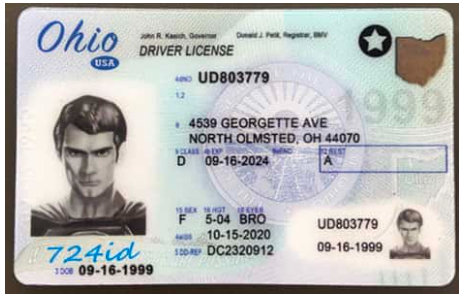
Exploring the merits of a digital driver’s license in the contemporary context necessitates a nuanced examination of how this technological advancement intertwines with cultural values, societal shifts, and technological advancements. This discussion delves into the cultural significance, historical evolution, and technological advancements that have paved the way for the emergence of a scannable, digital driver’s license. We will unravel several key themes to comprehend the multifaceted advantages of this innovative document.
Historical Evolution and Technological Advancements
The concept of licensing drivers has evolved significantly since its inception in the early 20th century. From rudimentary paper documents to sophisticated digital formats, the driver’s license has mirrored the technological advancements of the era. The advent of digital driver’s licenses represents a pivotal moment in the history of transportation and identity verification.
The transition to digital driver’s licenses is fueled by advancements in mobile technology, data encryption, and biometric authentication. These technologies have made it possible to securely store and transmit personal information, ensuring that the driver’s license remains both convenient and secure. The integration of QR codes, RFID chips, or digital wallets allows for instant verification of identity and driving privileges, streamlining processes and enhancing efficiency.
Cultural Significance in the Digital Age
In the digital era, obtaining a digital driver’s license continues to hold significant cultural value. The ID like Ohio fake ID, Hawaii fake ID, US fake greencard, remains a rite of passage for many teenagers, symbolizing the transition into adulthood and the acquisition of personal freedom. The ability to access a digital driver’s license instantly on a smartphone or other mobile device reinforces the idea of independence and autonomy, aligning with the American ideal of self-determination.
Moreover, the digital driver’s license fosters a sense of technological proficiency and adaptability. In a world where technology is increasingly integrated into daily life, possessing a digital driver’s license demonstrates an individual’s willingness to embrace and utilize new technologies. This cultural shift reflects the evolving nature of American society, where technology plays a pivotal role in shaping identity and societal norms.
Social and Economic Benefits
The digital driver’s license offers numerous social and economic benefits. By streamlining identity verification processes, it facilitates seamless interactions with law enforcement, government agencies, and private businesses. For instance, drivers can quickly present their digital driver’s license during traffic stops or when applying for services that require proof of identity and driving privileges.
Economically, the digital driver’s license contributes to the growth of the digital economy. It enables the development of new services and applications that leverage the data stored on the digital driver’s license. For example, insurance companies could use this information to offer personalized policies, while car rental agencies could streamline the rental process. Additionally, the digital driver’s license supports the growth of e-commerce and online services by providing a secure and convenient means of identity verification.
Technological Advantages and Security Considerations
One of the primary advantages of a digital driver’s license is its enhanced security features. Digital driver’s licenses utilize advanced encryption and biometric authentication to protect personal information from unauthorized access. This level of security is significantly higher than traditional paper-based driver’s licenses, which are prone to forgery and identity theft.
Furthermore, the digital driver’s license offers greater convenience and accessibility. Drivers can access their digital driver’s license from anywhere, at any time, as long as they have their mobile device. This eliminates the need to carry a physical card, reducing the risk of loss or theft. Additionally, the digital driver’s license can be easily updated and renewed, eliminating the need for in-person visits to government agencies.
Environmental Implications and Sustainability
The transition to digital driver’s licenses also has positive environmental implications. By eliminating the need for paper-based documents, digital driver’s licenses contribute to the reduction of waste and the conservation of natural resources. This aligns with the growing global emphasis on sustainability and environmental responsibility.
Conclusion
In conclusion, the digital driver’s license represents a significant advancement in transportation and identity verification. It embodies the cultural values of independence, autonomy, and technological proficiency, while offering numerous social, economic, and technological benefits. The enhanced security features, convenience, and environmental sustainability of digital driver’s licenses make them an attractive alternative to traditional paper-based documents.
As technology continues to evolve, the digital driver’s license will likely become the norm in many countries. Understanding the merits of this innovative document provides insight into how technological advancements can enhance our daily lives and reinforce our cultural values. The digital driver’s license is a testament to the power of technology to shape our society and improve our quality of life.
Home / Fake ID Shop / USA / Ohio Fake ID
